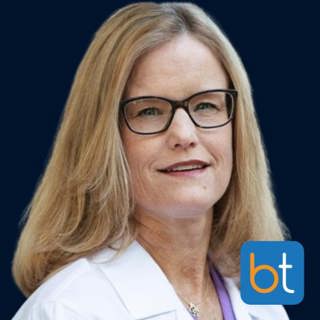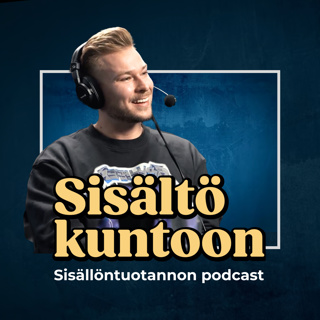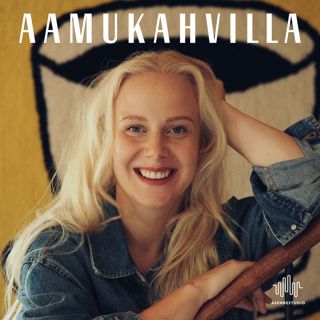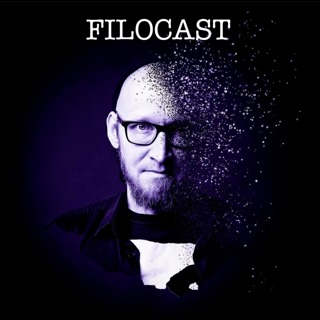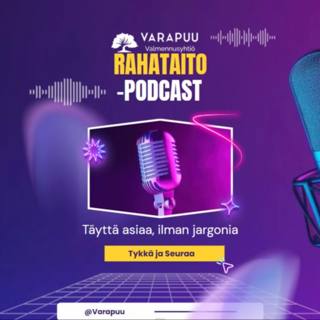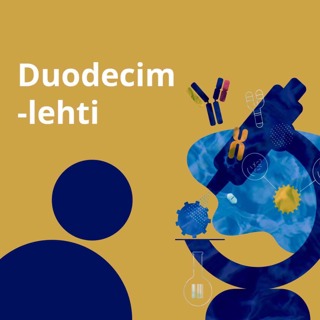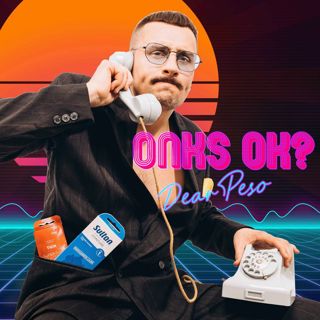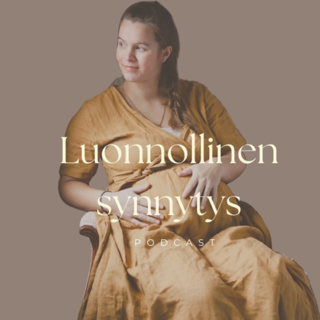
Ep. 368 The Recent Trend of Insurance Denials for CLI Interventions with Dr. Bret Wiechmann
In this episode, host Dr. Aaron Fritts and Dr. Krishna Mannava engage in a discussion with Dr. Bret Wiechmann about a concerning trend in the field—insurance denials for critical limb ischemia (CLI) interventions. --- CHECK OUT OUR SPONSOR Philips SymphonySuite https://www.philips.com/symphonysuite --- SHOW NOTES Bret is an IR in Gainesville, Florida with over 26 years of experience and is one of the founders of the Outpatient Endovascular & Interventional Society (OEIS). OEIS was started 10 years ago to advocate for the viability of non-hospital IR services. We start the episode with Bret sharing his staff’s firsthand encounters with pre-authorization challenges for atherectomy procedures.The panel discusses how the recent inflammatory NY Times article regarding the use of atherectomy to treat peripheral artery disease has exacerbated these challenges. The doctors delve into the perplexing use of non-scientific articles as evidence by insurance companies, which are often influenced by third-party recommendations. The disconnect between insurance decisions and patients' actual needs becomes evident, as peer-to-peer reviews usually involve physicians unfamiliar with the specific medical speciality. Next, we explore strategies for navigating the intricacies of insurance approvals, a particularly challenging task as each insurance company has its unique set of requirements for procedure coverage. Evaluating these requirements for each patient not only limits the capabilities of the physician, but also decreases the quality of the patient's care. One strategy that is discussed is compiling a list of different payers and their specific requirements for each procedure, but this takes away valuable time away from a patient’s care. Another strategy includes the intriguing notion of physicians noting the names of insurance companies and peer reviewers on medical records as reasons for denying certain procedures. While promising, the effectiveness of this approach remains uncertain. Furthermore, the episode contemplates the possibility of refusing to work with insurance companies that consistently denying coverage— a bold strategy that warrants careful consideration as it may drop patient volumes. To combat the rising tide of insurance denials, the discussion emphasizes the pivotal role played by organizations like OEIS. It highlights the importance of involving referring physicians in various specialties, patients themselves as well as industry stakeholders manufacturing relevant devices to bring about meaningful change in the insurance approval process. --- RESOURCES New York Times Article: https://www.nytimes.com/2023/07/15/health/atherectomy-peripheral-artery-disease.html OEIS: https://oeisweb.com
25 Syys 202352min

Ep. 367 How TV and Radio Still Work to Market Your Practice with Dr. Aaron Kovaleski
In this episode, host Dr. Aaron Fritts interviews Dr. Aaron Kovaleski on good old-fashioned TV and radio marketing. Aaron is an interventional radiologist and founder of Endovascular Consultants of Colorado, who has found success in using tried and true methods of advertising to grow his practice. --- CHECK OUT OUR SPONSOR Philips SymphonySuite https://www.philips.com/symphonysuite --- EARN CME Reflect on how this Podcast applies to your day-to-day and earn free AMA PRA Category 1 CMEs: https://earnc.me/pL6Ay0 --- SHOW NOTES We begin with Aaron’s initial dive into marketing, tips that he learned, and surprising discoveries during this endeavor. He discusses differences between TV and radio advertising and ideal promotions to run through each medium. He also notes the importance of supplementing these strategies with a physical presence. Aaron also shares advice for building a marketing budget. He breaks down categories and percentage of funds invested towards his OBL’s TV and radio outreach. Aaron then speaks on how his practice measures the success of their efforts through analytics provided to them by TV and radio stations and CRM technology. We also discuss the time investment and step-by-step approaches for newer OBLs that are new to marketing outreach. We conclude this episode with future directions for marketing and a shoutout for next year’s Outpatient Endovascular and Interventional Society (OEIS) Annual Meeting in Las Vegas (April 25th-27th, 2024), which will have a dedicated session on marketing and practice building led by Aaron. --- RESOURCES Outpatient Endovascular and Interventional Society (OEIS) Annual 2024 Meeting: https://oeisweb.com/meetings/2024-annual-meeting/
22 Syys 202332min

Ep. 366 Navigating OBL & ASC Business: Pitfalls to Avoid with Teri Yates
In this episode, host Aaron Fritts is joined by Teri Yates, CEO of Accountable Physician Advisors, who offers essential guidance for successfully establishing and managing Office-Based Labs (OBLs). --- CHECK OUT OUR SPONSORS Accountable Physician Advisors http://www.accountablephysicianadvisors.com/ Philips SymphonySuite https://www.philips.com/symphonysuite --- SHOW NOTES Teri started a consulting company after working as a quality and risk officer at a radiology practice for 18 years. As the company rapidly grew, she has worked with many different physician practices and specialities. We start off the discussion by identifying key pitfalls that Teri sees in OBL ventures. First, it is common for physicians to conduct inadequate due diligence about referral sources, which can be a barrier to effective marketing and patient acquisition. Also, it is common for founders to lack a detailed revenue model or a plan for the business. Oftentimes, they will underestimate the capital needed to start the OBL and lack a clear idea about the types of procedures and patients they are catering towards. Another pitfall is not realizing the amount of time investment required. Teri estimates that approximately 10% of a physician's time will be needed to manage the OBL and it is important to take this into account. Finally, a common error is initially hiring individuals not qualified to be administrators, such as family members or trusted individuals. Teri also highlights some of the major reasons physicians consult her company. These challenges often revolve around "people problems," encompassing issues related to both administrative difficulties and employee management. Staffing and retention problems, leading to a significant turnover of employees, are common concerns. She underscores the importance of addressing issues related to physicians themselves, emphasizing that partners must set the tone for the culture within a company. Patient turnover efficiency in OBLs is also a recurring issue. Teri's advice for this issue to closely follow a few patients throughout their entire visit. This will most likely uncover redundancies in the patient experience, many of which the staff might already be aware of, but hesitant to communicate to leadership. As Teri reflects on her experiences, she notes that it typically takes 6-9 months to fully construct and operate an OBL. A comprehensive understanding of healthcare regulations in each state is crucial in the initial development stages. --- RESOURCES Accountable Physician Advisors: https://www.accountablephysicianadvisors.com/
18 Syys 202342min

Ep. 365 Manejo de las Estenosis Benignas en Vía Biliar: Actualización en Stents Biodegradables con Dr. Eva Criado Paredes
En este episodio de BackTable, la Dra. Sara Lojo Lendoiro entrevista a la Dra. Eva Criado, radióloga intervencionista del Hospital Parc Taulí de Sabadell, Barcelona, sobre el manejo de las estenosis benignas en vía biliar y los stents biodegradables. --- EARN CME Reflect on how this Podcast applies to your day-to-day and earn free AMA PRA Category 1 CMEs: https://earnc.me/zVailz --- SHOW NOTES En primer lugar la Dra. Criado explica la clasificación de las estenosis biliares y las diferentes etiologías de las estenosis benignas, como causas iatrogénicas, procesos autoinmunes, inflamatorio-infecciosos, isquémicos o post-transplante hepático. Es crucial saber reconocer este tipo de estenosis y diagnosticar su etiología, ya que su no reconocimiento, o su tratamiento inadecuado deriva en complicaciones con riesgo vital para los pacientes. Las pruebas de imagen como la ecografía, el TC o la RM y colangioRM juegan un papel importante para la detección de estenosis biliares, su precisión diagnóstica y por tanto para su manejo y la planificación prequirúrgica A continuación la Dra. Criado resume las diferentes alterativas terapéuticas para la estenosis biliar benigna, como la cirugía y los tratamientos mínimamente invasivos, tanto endoscópicos como percutáneos, como son la dilatación y la colocación de stents. Ella enfatiza que la decisión sobre qué método utilizar debe de ser valorada de manera individualizada en función de la etiología, tipo y localización de la estenosis y factores de riesgo de cada paciente. Ambas doctoras destacan el hecho de que no existen unas guías de consenso entre las distintas sociedades que faciliten el manejo estandarizado con protocolos para el manejo de esta patología, lo cual sería muy Valioso. Adicionalmente, la Dra. Criado explica las posibilidades terapéuticas que ofrece la radiología intervencionista: la bilioplastia percutánea o dilatación, así como sus resultados y complicaciones, como la alta tasa de re-estenosis. Posteriormente pasa a evaluar los distintos tipos de stents, y específicamente los stents biodegradables, comentando las tasas de éxito técnico en su colocación, su permeabilidad primaria y la baja tasa de complicaciones que han demostrado en estudios multicéntricos a largo plazo, uno de los cuales es el registro Biella, un registro multicéntrico en el que han participado 11 centros españoles. También realiza un resumen de los diferentes tipos de stents biodegradables que hay hoy en día en el mercado y comenta las principales características mecánicas de los mismos. La Dra Criado concluye el episodio comentando su experiencia personal en el tratamiento de estenosis biliares benignas con stents biodegradables dando una serie de consejos prácticos para la liberación de estos stents y para prevenir complicaciones, así como las principales contraindicaciones y el tipo de seguimiento recomendado. También destaca la importancia de valorar cada caso individualmente y tomar decisiones bajo el marco de un equipo multidisciplinar. Finalmente comparte sus predicciones para el futuro de los stents biodegradables.
15 Syys 202343min

Ep. 364 Percutaneous Transmural Arterial Bypass (PTAB) as a Treatment Option for CTOs with Dr. Sean Lyden
In this episode, host Dr. Sabeen Dhand interviews vascular surgeon Dr. Sean Lyden about percutaneous transarterial bypass (PTAB) with DETOUR, a new therapy for treating occlusive / stenotic superficial femoral artery (SFA) disease. --- CHECK OUT OUR SPONSOR Endologix https://endologix.com/ --- SHOW NOTES Dr. Sean Lyden serves as the Chairman of Vascular Surgery at Cleveland Clinic. Sean starts off the discussion by conveying the severity of SFA chronic total occlusion (CTO) and walks us through what PTAB therapy is. We then cover the steps and general principles of using the DETOUR technology. Throughout the episode, Sean and Sabeen discuss the structure and key takeaways of both the DETOUR 1 and DETOUR 2 trials, held in Europe and the United States respectively. They also cover major questions, such as DVT and PE risk, patency of femoral vein following DETOUR intervention, and overall device cost. We conclude the episode with future directions of the now FDA-approved DETOUR device, and when and how vascular and interventional physicians can incorporate the new technology into their practice. Sean and Sabeen also contrast prior treatment options with the recent DETOUR trials to highlight how longer calcified / occluded SFA lesions now have a viable, effective, and safe endovascular treatment option. --- RESOURCES PTAB with DETOUR System: https://endologix.com/ptab/detour/ DETOUR 1 Trial: https://pubmed.ncbi.nlm.nih.gov/29327570/ DETOUR 1 Trial, 1 year follow-up results: https://pubmed.ncbi.nlm.nih.gov/32276015/ DETOUR 2 Trial, 12 month results: https://www.jvascsurg.org/article/S0741-5214(22)01274-5/fulltext DETOUR 2 Trial, 24 month results from Vascular Annual Conference Presentation: https://www.dicardiology.com/content/endologix-announces-24-month-results-detour-2-study-2023-vascular-annual-meeting Voyager Trial: https://www.nejm.org/doi/full/10.1056/nejmoa2000052 Compass Trial: https://www.nejm.org/doi/full/10.1056/nejmoa1709118
11 Syys 202334min

Ep. 363 Graduating IR Residents: What Jobs Are They Looking For? with Dr. Pranav Moudgil
In this episode, host Dr. Aaron Fritts is joined by Dr. Pranav Moudgil, a new IR graduate who has just completed his first IR job search. Today’s discussion revolves around the job landscape for recent interventional radiology graduates. --- CHECK OUT OUR SPONSOR Philips Image Guided Therapy Devices Academy https://resource.philipseliiteacademy.com --- EARN CME Reflect on how this Podcast applies to your day-to-day and earn free AMA PRA Category 1 CMEs: https://earnc.me/rhaY4i --- SHOW NOTES The episode begins by introducing Pranav, who hails from Michigan and has recently completed his IR training at Beaumont. His discussion on today’s podcast was influenced by the recurring question he faced during his job hunt: “What do candidates like him seek in their careers?” Pranav's job search began in January of his PGY-5 year, 18 months before his graduation. When compared to his initial expectations of a robust job market, reality both did and did not meet these expectations. Pranav found that while there were a lot of job postings online, he was aware that there were just as many, if not more, word-of-mouth job opportunities. During his early training years, Pranav initially thought that he wanted a 100% IR role, but after getting more exposure to DR, he later realized that he wanted a balanced mix of DR and IR. When searching for jobs, Pranav found that many of his interviews came from listings on the ACR job board. However, after seeing the jobs his peers ended up taking, Pranav realized that personal connections played a significant role in job placement for him and his peers. As we delve into the core aspects of Pranav's job search strategy, he emphasizes the importance of being aware of which factors you value most in a job. Pranav also encourages new grads to evaluate job offers in terms of technical staff support and long-term job satisfaction. He advises job seekers to be vigilant for red flags during negotiations and emphasizes the importance of clear communication. The topic of locums tenens work also gets brought up during this discussion, as a means to explore diverse job opportunities before committing to a permanent position. Overalll, for a new IR graduate, Pranav recommends engaging in candid discussions about pay and structural aspects with mentors, understanding personal priorities, and evaluating job offers with a discerning perspective. --- RESOURCES ACR Job Listings: https://jobs.acr.org/
8 Syys 202345min

Ep. 362 Catheter Shapes: Basic to Challenging Cases with Dr. Kumar Madassery and Dr. Shelly Bhanot
In this episode, host Dr. Aaron Fritts interviews interventional radiologists Dr. Kumar Madassery and Dr. Shelly Bhanot about catheter shapes and when to use each type in basic and challenging cases. --- CHECK OUT OUR SPONSOR Cook Medical https://www.cookmedical.com/vascularaccessbacktable --- SHOW NOTES Kumar serves as an Associate Professor and Director of Peripheral Vascular Interventions/Critical Limb Ischemia and Shelly is a PGY-6 IR resident at Rush University Medical Center in Chicago, IL. Kumar and Shelly walk us through a number of different catheters and techniques, along with tips that they have learned from their experiences in the cath lab. They pair complex and challenging anatomy with catheter types, and they describe their reasoning behind different approaches. After going through case-based examples, both Kumar and Shelly share advice on how trainees can become more familiar with tools on the back table. These include observing supply shelves, asking questions, and learning from IR techs and device representatives. We conclude the episode by emphasizing the power of teaching and how experience is a big factor in becoming more and more familiar with all the catheters that are available to our specialty. Disclaimer: The content, information, opinions and viewpoints contained in this presentation are for educational purposes only. Some opinions expressed may represent those of the speaker and are based on their own clinical experience in their practice. This information is not meant or intended to serve as a substitute for a healthcare professional’s clinical training, experience or judgment. Guest speakers are paid consultants of Cook Medical. Always refer to the Instructions for Use for complete prescribing information including indications for use, warnings, precautions, adverse events and deployment/use instructions.
4 Syys 20231h

Ep. 361 Intra-Arterial and Percutaneous Treatment of Giant Hepatic Hemangiomas with Dr. Jafar Golzarian
In this episode, our host Michael Barazza interviews Dr. Jafar Golzarian, interventional radiologist at the University of Minnesota, about intra-arterial and percutaneous treatment of giant hepatic hemangiomas. --- SHOW NOTES We start this episode off by highlighting the Global Embolization Symposium and Technologies (GEST) initiative that Jafar co-founded in 2007. Over time, GEST has evolved into a highly acclaimed conference, drawing an international audience of thousands of participants for its webinars. We then dive into cutting edge treatments of liver hemangiomas. Jafar discussed how he was introduced to a novel approach in 2014 when one of his friends, Dr. Shahram Akhlaghpoor, sent him a paper with his results from using transarterial bleomycin-lipiodol embolization (B/LE) to treat symptomatic giant hepatic hemangiomas. Another friend of Jafar’s shared an inventive approach in shifting perspectives to view hepatic hemangiomas as low-grade venous malformations and using percutaneous injections for treatment. Then, Jafar discusses the specifics of his approach to hepatic hemangiomas and how he usually only treats hemangiomas that are large, cause pain and discomfort, or exert pressure on vital structures such as the portal vein or bile duct. Jafar notes that the patient demographic that presents with hemangiomas are typically women aged 30 to 50, and they can be self-referred or referred by hepatobiliary surgeons. In regards to treatment, Jafar prefers either 30, 45, or 60 units of bleomycin, favoring the latter for hemangiomas exceeding 10 cm. He prefers percutaneous access if feasible, but he resorts to chemoembolization in cases when insurance coverage presents issues. Minor post-treatment symptoms post-treatment include abdominal pain and occasional nausea, with extremely rare compilations being pulmonary fibrosis or allergic reactions to the bleomycin. Jafar notes that imaging at 1, 3, and 6 months post-treatment guides assessment of treatment effectiveness of, with substantial change best evaluated at the 6-month mark. Jafar’s treatment has garnered high patient satisfaction, with very few patients requiring return for further therapy after the 6 months. He notes that when surgeons are shown the before and after imaging of the treatment of hemangiomas, they become big advocates of these procedures. --- RESOURCES Transarterial Bleomycin–Lipiodol Embolization (B/LE) for Symptomatic Giant Hepatic Hemangioma: https://pubmed.ncbi.nlm.nih.gov/29922860/
1 Syys 202338min
